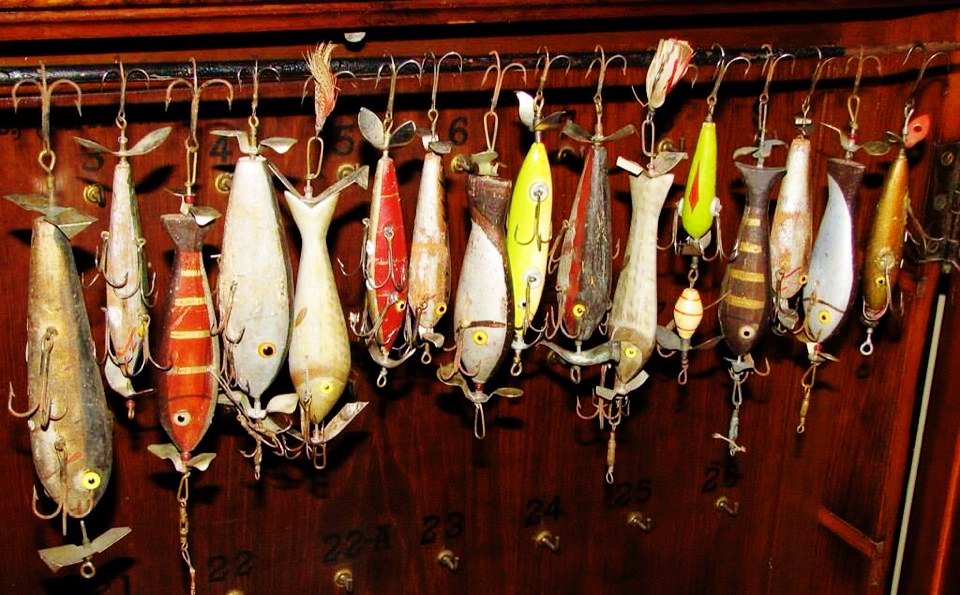
photo by Joe Stagnitti
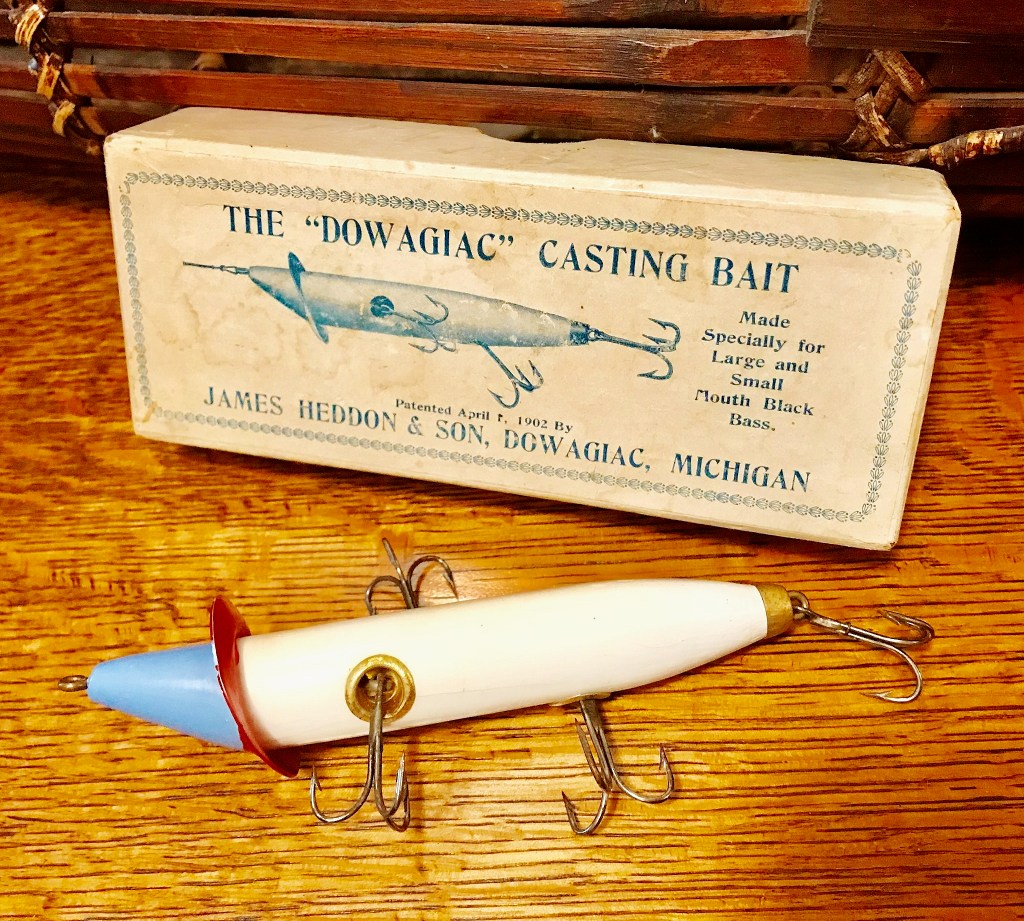
Offered in 1902 by James Heddon & Son of Dowagiac, Mich., these unique lures are more often referred to by collectors as the “Slope Nose.” The four-hook model shown here is referenced in the earliest catalog and features the same gold-washed cups as the two-hook version. Together, they mark the very beginning of lure development by the Heddon family and are considered among the most desirable to hardcore collectors.
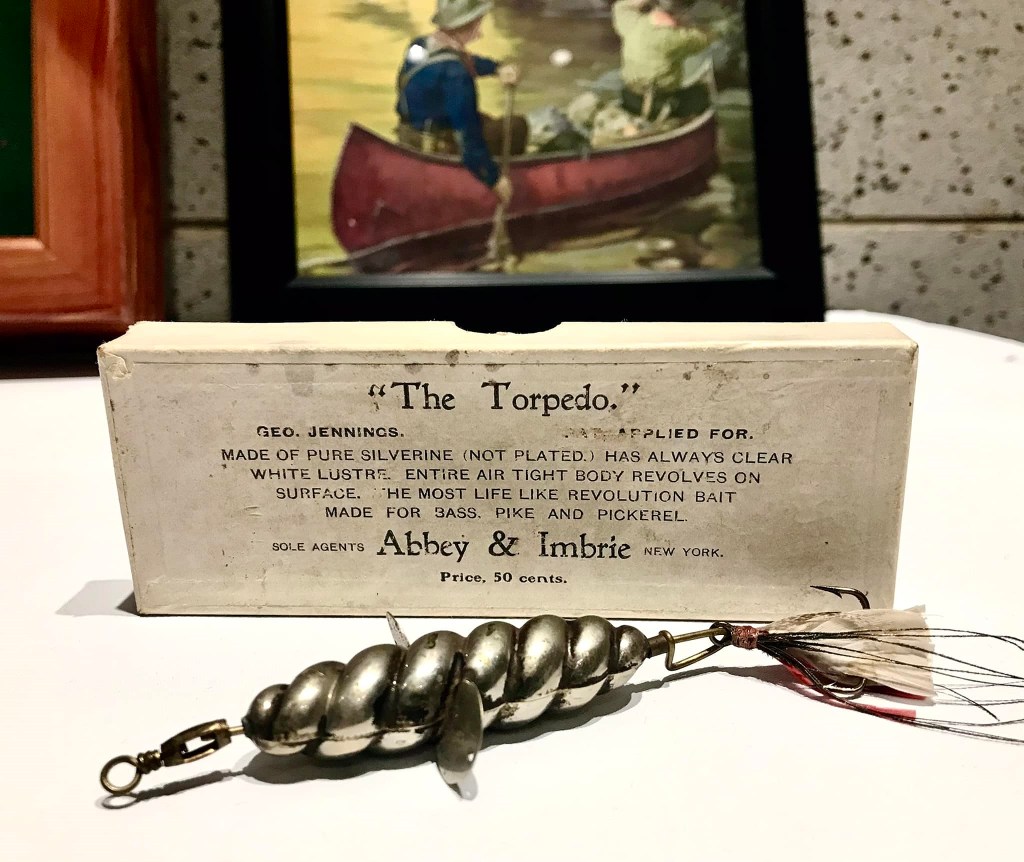
Introduced by Abbey & Imbrie around 1900, the Torpedo was actually invented by George Jennings of Newark, N.J. According to the description on the box top, Torpedo lures were made from a lightweight “silverine” material and completely air tight, so that they could remain on the surface and rotate with ease. The maker boasts them as “the most lifelike revolution bait made for bass, pike and pickerel.”
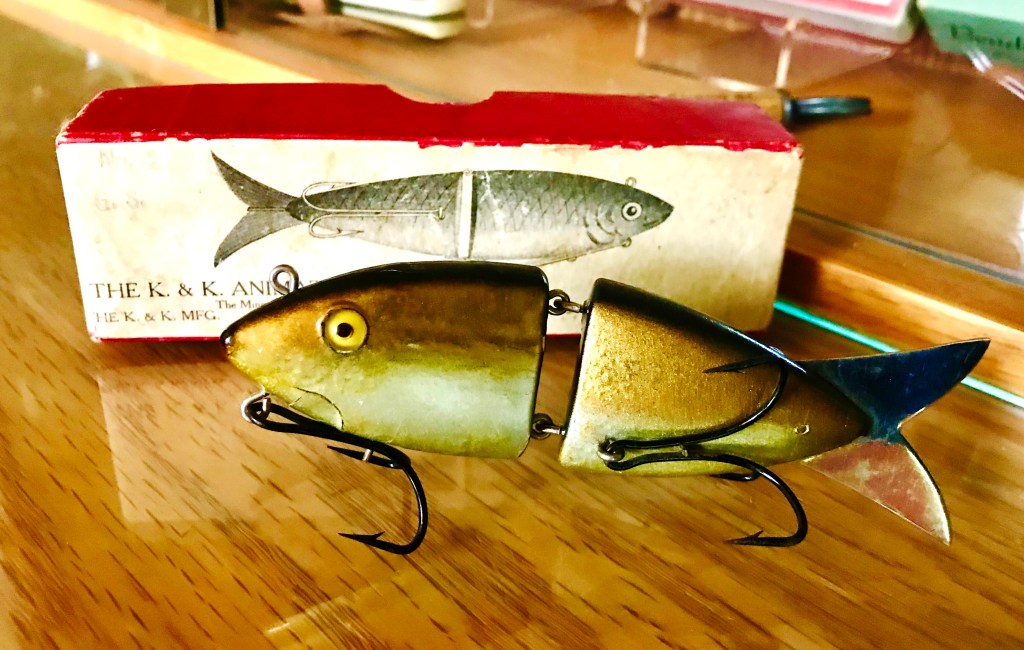
Patented on June 25, 1907, the K & K Animated Minnow was the invention of John D. Kreisser. It was produced by K & K Manufacturing Company of Toledo, Ohio, and is considered to be the first articulating wooden lure. Its hinged body features three sets of breakaway tandem hooks, metal tail fin and yellow glass eyes. Highly prized by collectors, K & K Animated Minnows are considered the predecessor to modern swimbaits. To learn more about these rare lures and their role in the development of America’s fishing industry, visit: The first swimbait.
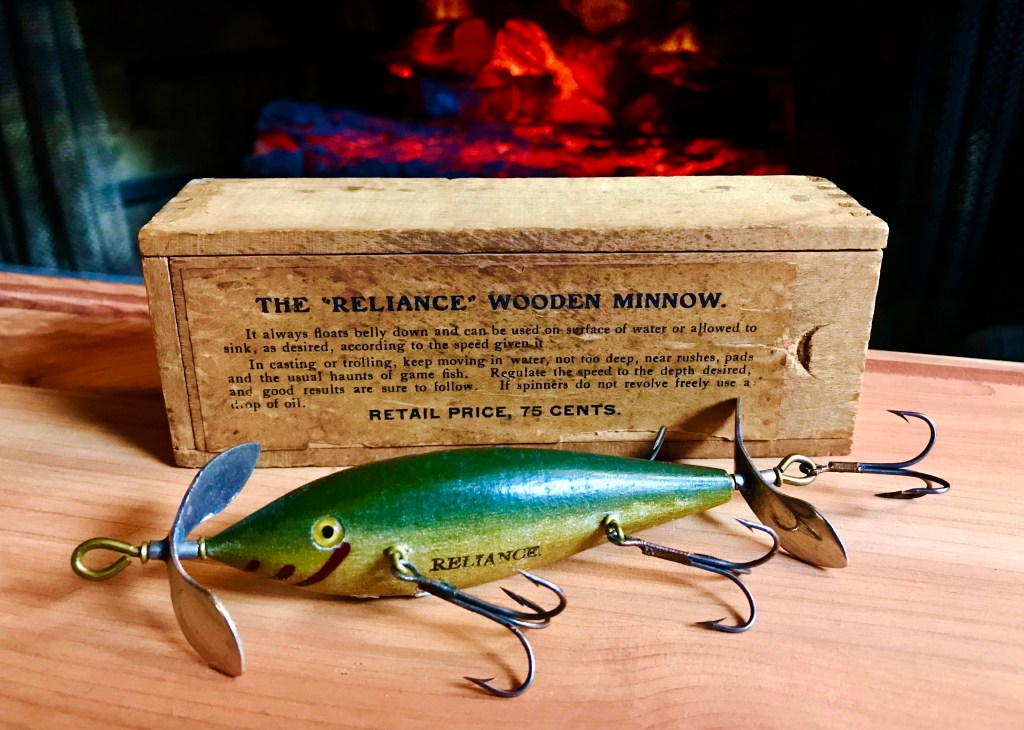
Introduced in 1905 by H. C. Kaufman Company of Philadelphia, Penn., this elegant underwater minnow was part of the Harkauf family of wooden lures. By far the most attractive, it features yellow glass eyes, thick gill marks, bow-tie props and wire-through hook hangers. It’s painted dark green blending to aluminum and is accompanied by its original wooden box. The box label states, “It always floats belly down and can be used on surface of water or allowed to sink, as desired, according to the speed given it.”
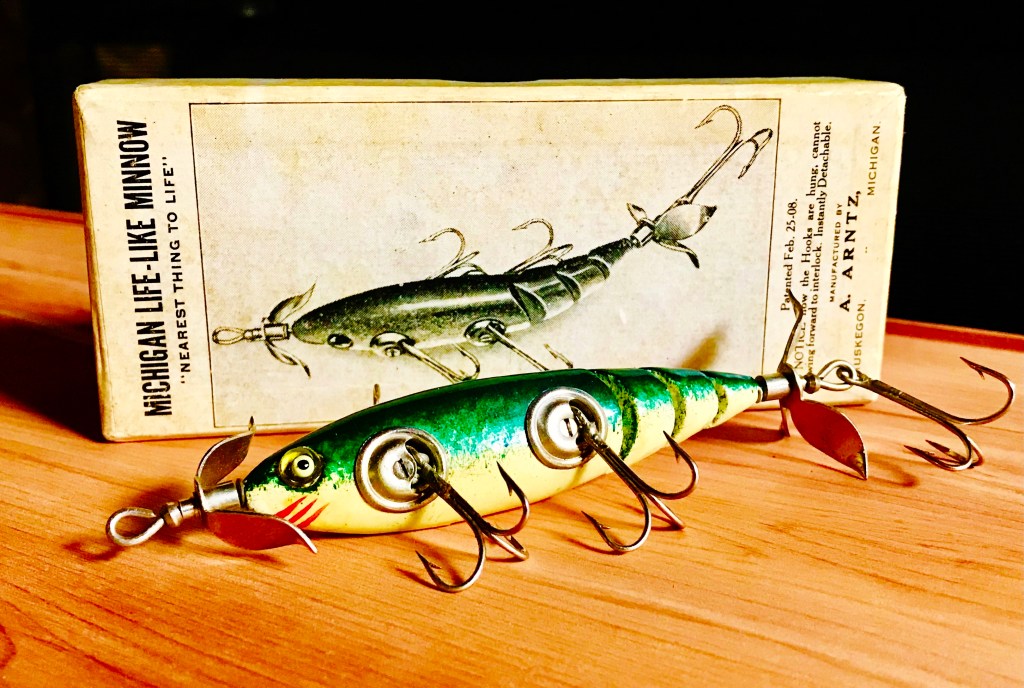
Introduced in 1908 by Jacob Hansen, this unusual lure features a four-section wooden body with tandem propellers, glass eyes and uniquely designed hook hangers. Its asymmetrical, three-bladed tail prop forces the rear section of the lure to sashay from side to side … making it one of the earliest articulating lures. Life-Like Minnows were sold for a short time by Adolf Arntz, a sporting goods dealer based in Muskegon, Mich.
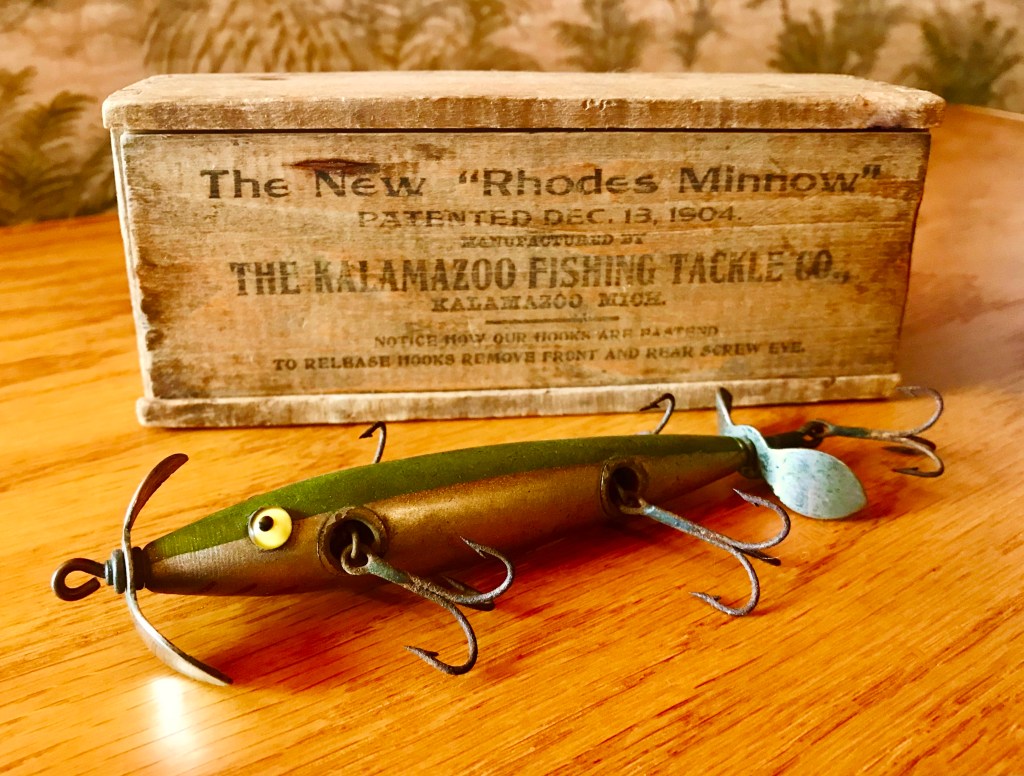
These rare wooden lures were introduced by Jay Rhodes in 1905 and were available for that year only. Featuring yoke-colored glass eyes, twin propellers and five sets of treble hooks, they are the first ever lure to utilize “gem-clip” hardware — a thru-body attachment resembling a tiny paper clip. Rhodes competitor, William Shakespeare Jr., was so impressed, he bought the rights to the lure, the Rhodes name, and the Kalamazoo Tackle Company name, thus ending Jay Rhodes’ two-year career in the fishing industry.
Thanks to vintage tackle sleuth, Bill Sonnett, for sharing his insight on these truly historical lures. Learn more about Jay Rhodes here.
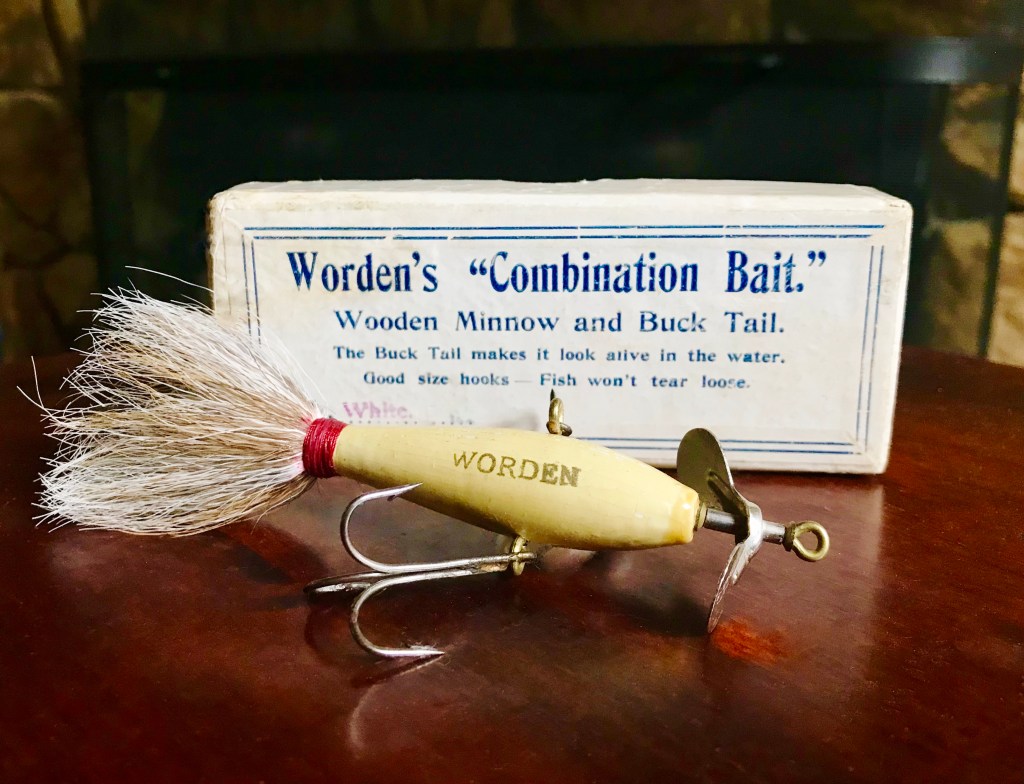
These unique lures were introduced in 1905 by Worden Buck Tail Manufacturing Company of South Bend, Ind., and were later marketed under the South Bend Bait Company brand. The concept was simple — combine the appeal of a fancy bucktail with that of a wooden lure body.
According to a 1905 ad published in The Sporting Goods Dealer, the Combination Bait was shaped from red cedar and finished in 12 colors. They were assembled with brass hardware and featured a single, nose-mounted, Paul Junod patented prop.
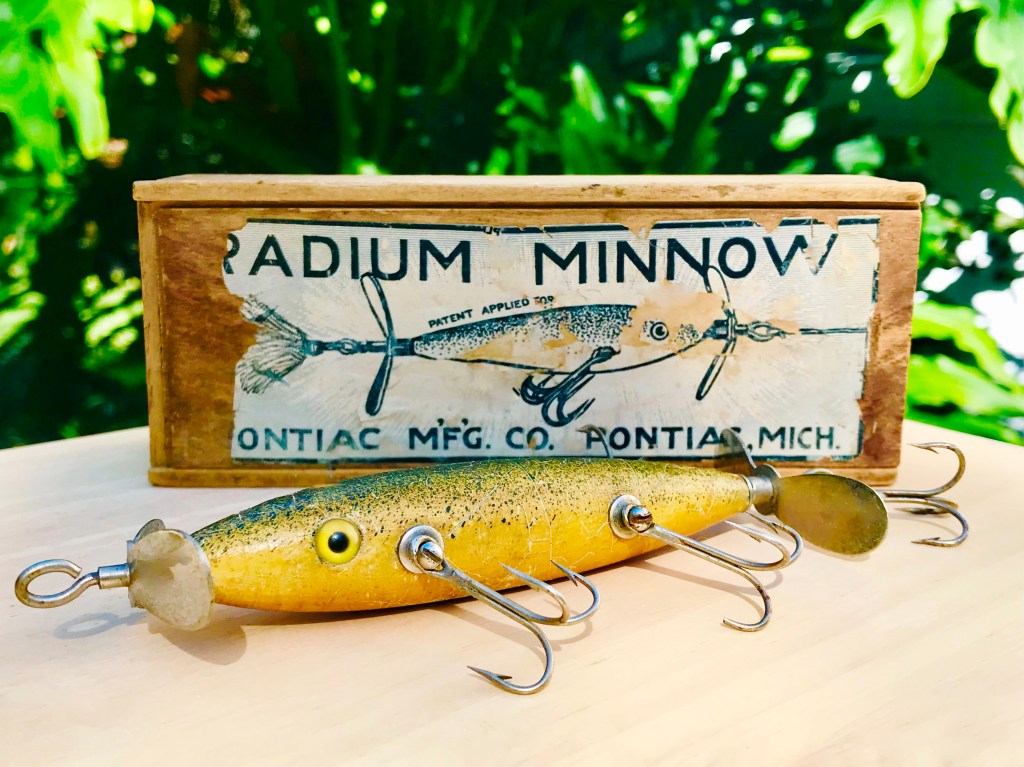
The Radium Minnow was introduced in 1909 by Pontiac Manufacturing Company of Pontiac, Mich. This example features egg-yoke-colored glass eyes, floppy props and specialized hooks secured with round-head screws. It’s purported to be painted with a radioactive material, which would be toxic to humans. Whether that’s true or not, the Pontiac Radium Minnow has a rustic look that collectors find irresistible. And being paired with a wooden picture box only adds to its appeal.
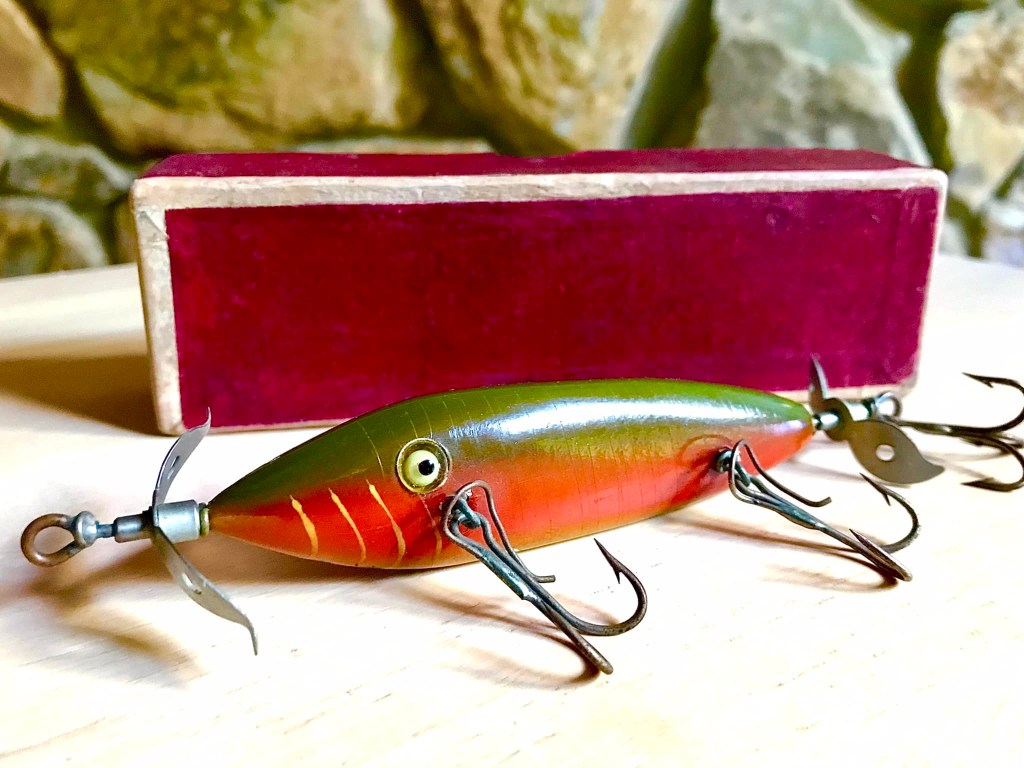
These beautiful lures were offered in 1908 by J. L. Clark Manufacturing Company of Rockford, Ill.. Characterized by their tall, flat-sided profiles, Clark Experts are quite unique in design. In addition to its attractive paint scheme, this example features white iris glass eyes, twin-holed props and type-two removable hooks. Add a period-correct maroon box and you’re looking at a true classic combo.
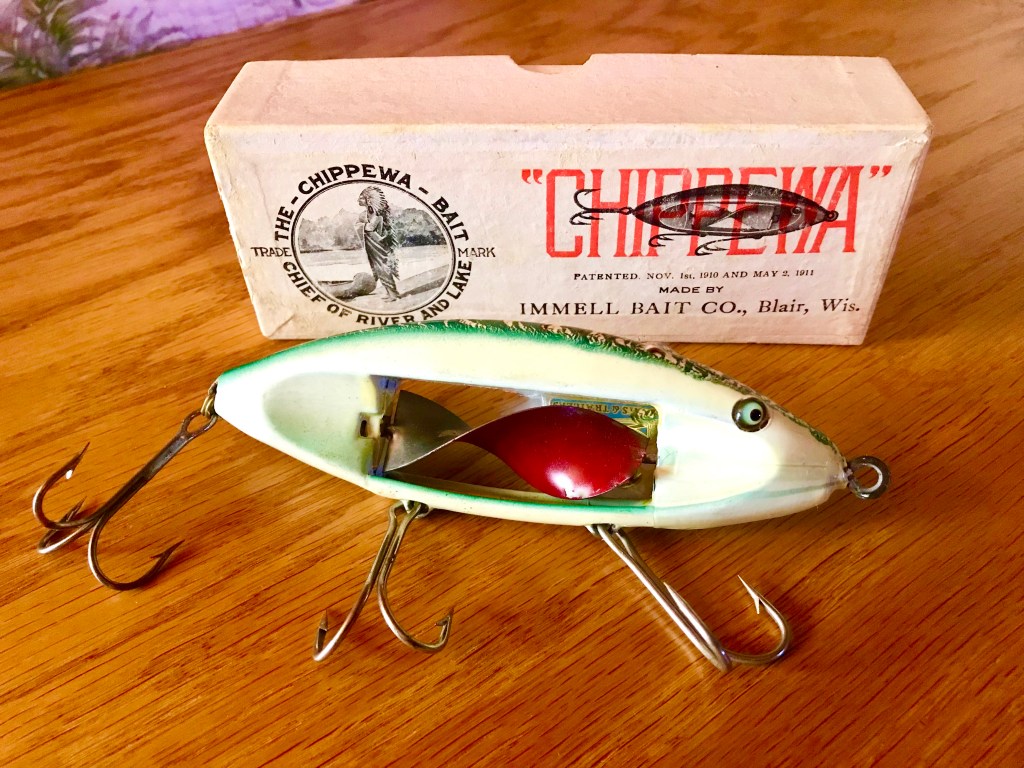
The Chippewa Minnow was offered by Immel Bait Company of Blair, Wisc., in 1910. These unique lures feature a wooden body with large, spiraling metal blade designed to trigger the predatory instincts of game fish. Whether that concept was effective or not, it’s hard to say. What is certain is the eye appeal of these rare and beautiful lures.
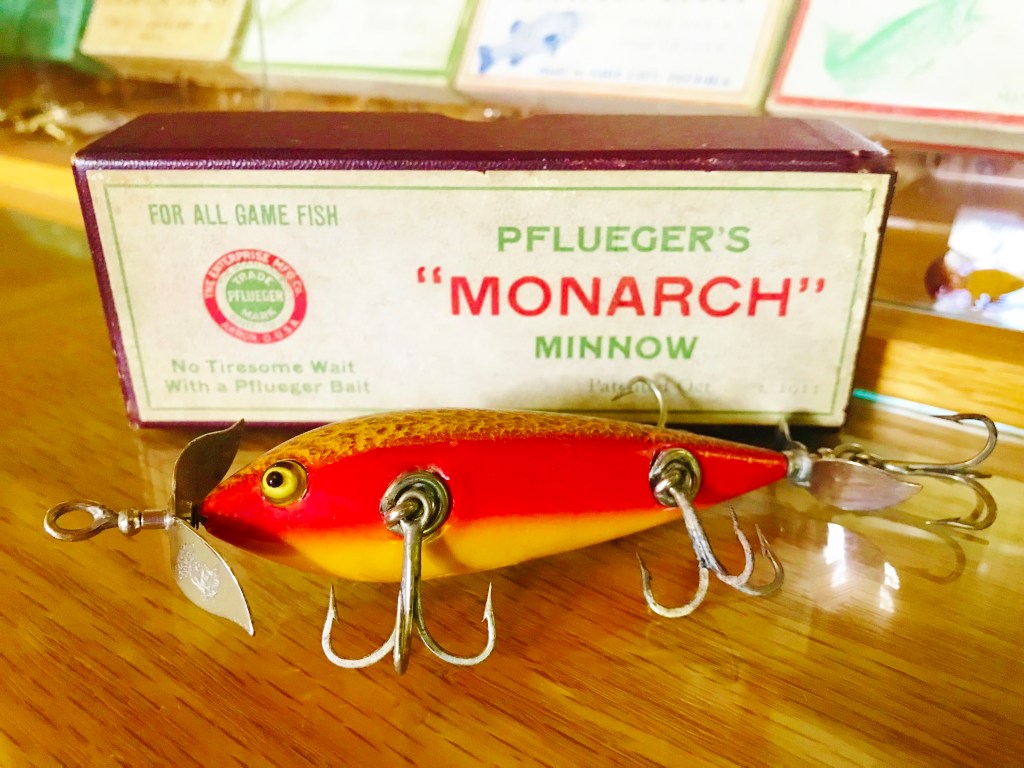
This second version of the Monarch Minnow was introduced by Enterprise Manufacturing Company of Akron, Ohio, in 1914 — at which point, the props were stamped with the company’s “Bulldog” trademark. Beautifully crafted, these full-bodied wooden lures feature glass eyes, tandem propellers and five sets of treble hooks. The catalog designation for the Underwater Monarch was “2100,” and the color code for this sienna fire example was No. 2186.
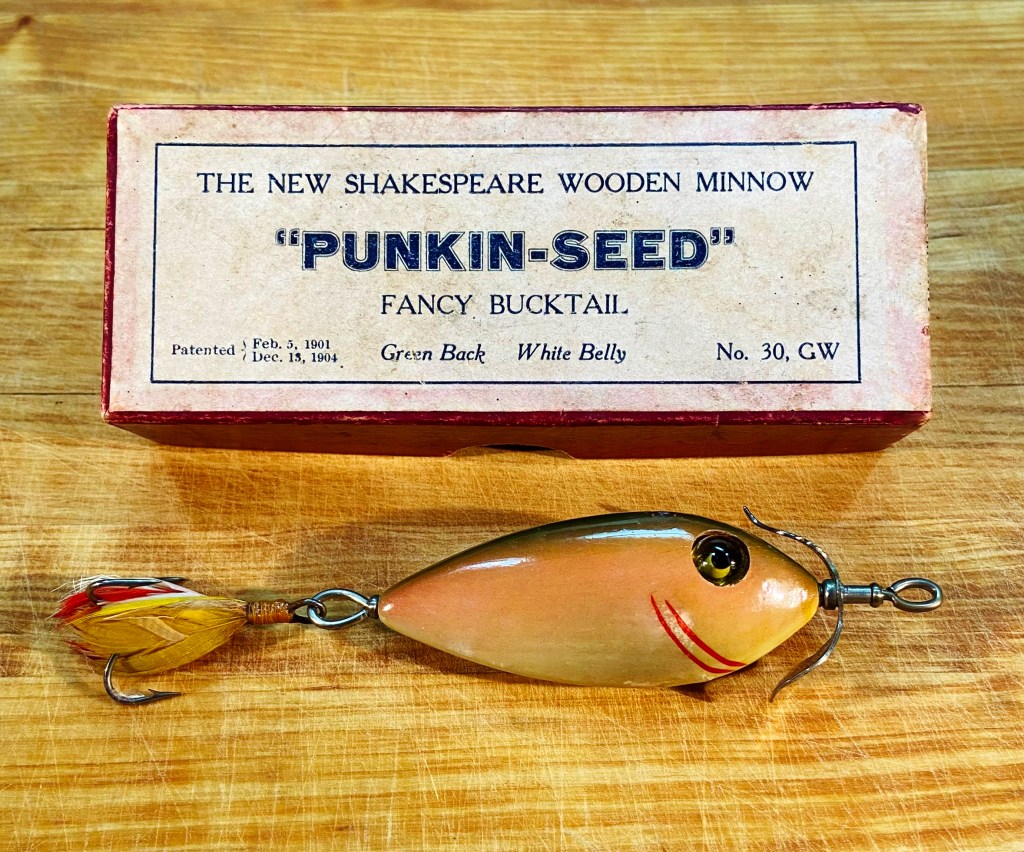
Introduced in Shakespeare’s 1908 catalog, the “Punkin-Seed” quickly became an angler favorite. They were offered in sinking and floating models (No. 30 and 31 respectively), in a variety of colors. The wooden body measures approximately 2 inches and features large glass eyes and long, sweeping gill marks with a trailing, feathered treble hook. Punkin-Seeds are considered quite rare, but boxes like this one are nearly impossible to find. Together, the pair make quite a statement.
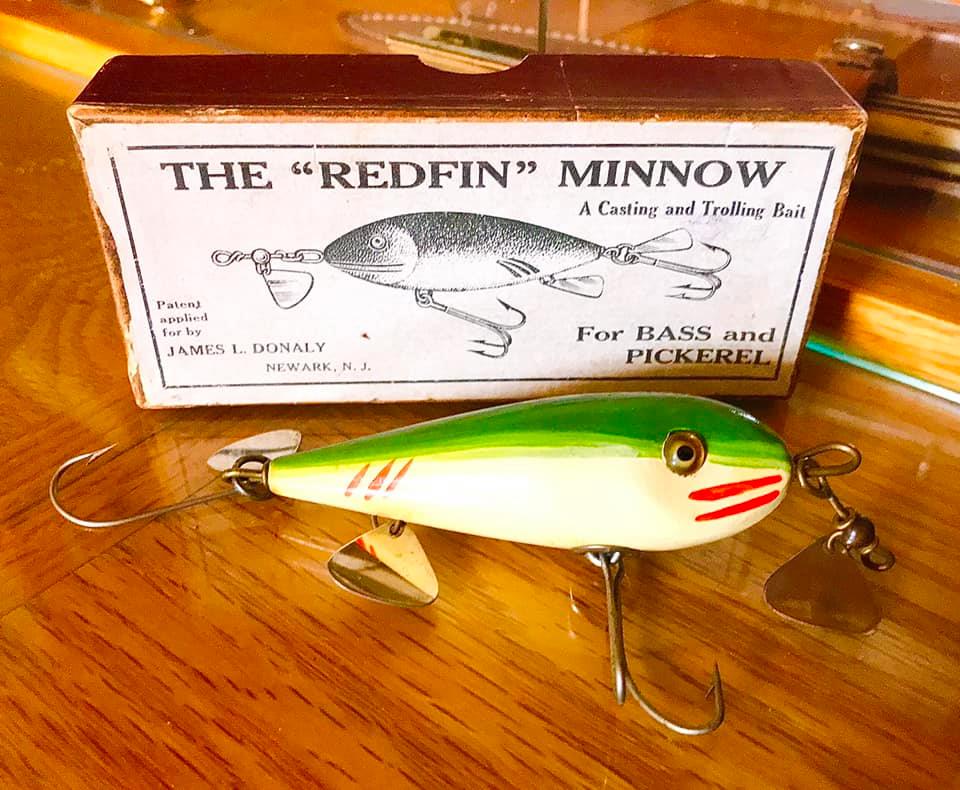
Introduced in 1911 by Jim Donaly Baits of Bloomfield, N.J., the RedFin Minnow is considered a classic. Its full-body profile features glass eyes, two-tone paint scheme with red accents, Jersey-style hook configuration and three unique flashing metal fins. In the early 1900s, the State of New Jersey imposed a law restricting the use of more than three hook barbs on a single lure. Hence the tag “Jersey-rig.”
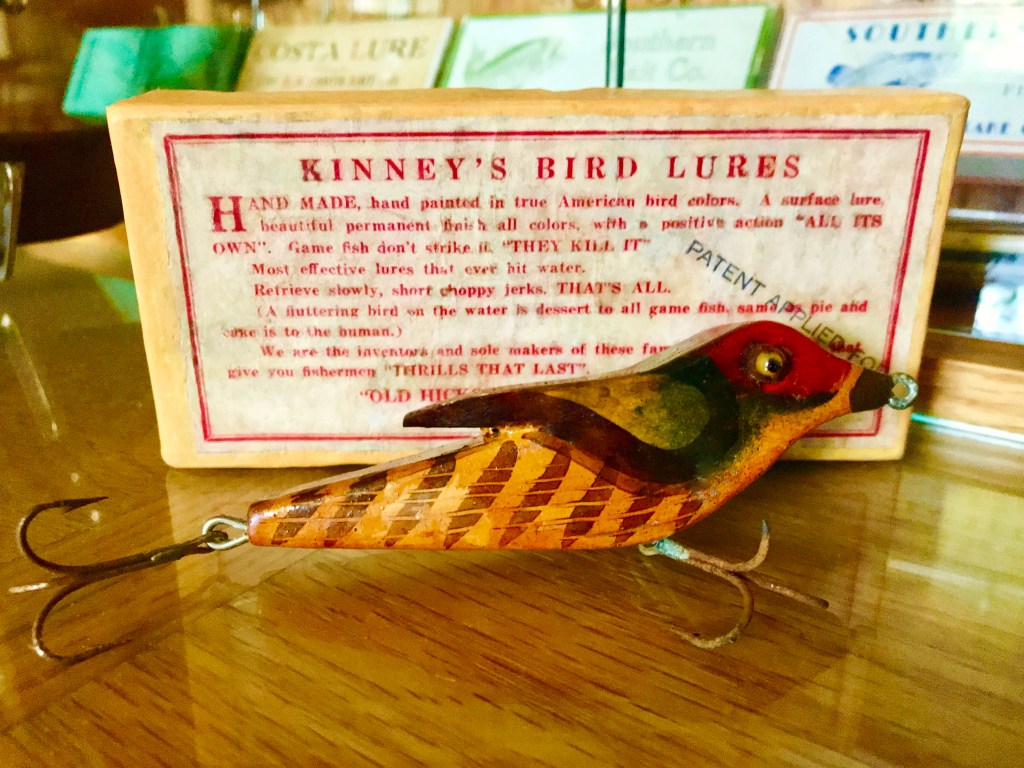
Herbert Kinney entered the tackle business in the mid 1910s. Over the next decade, his company’s name changed several times, eventually becoming Old Hickory Rod & Tackle Company. His first lure making efforts involved the use of metal. Soon after, however, he introduced his unique, hand-painted bird lures shaped from wood — claiming, “a fluttering bird on the water is dessert to all game fish, same as pie or cake is to the human.”
The combo featured here was a true barn find in Southern Georgia about a decade ago. It is the second known box of its kind to surface, and it was accompanied by this hand-painted bird and box paperwork. Together, they are a true angling treasure. To learn more about Herbert Kinney and his unique bird lures, visit: A bird in the hand.
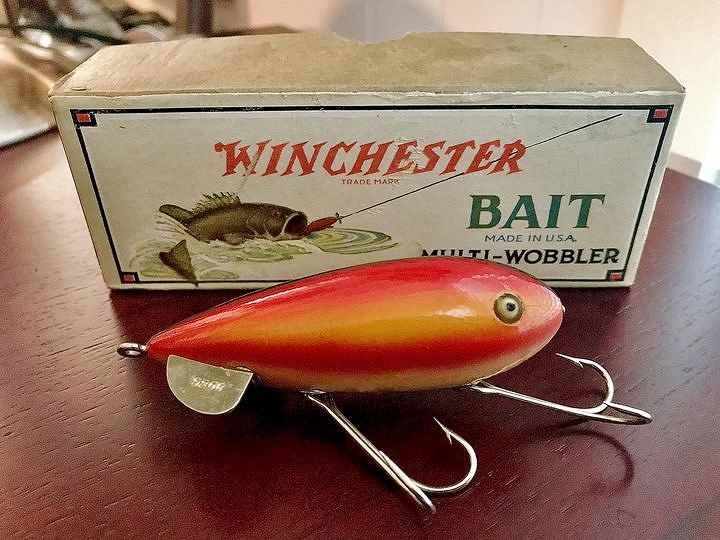
Known more for their weaponry, Winchester Repeating Arms introduced the Multi-Wobbler in 1921. It was the company’s answer to the Heddon Crab Wiggler — a leading seller at that time. Utilizing the same shape and profile, the Multi-Wobbler featured small, side-mounted diving planes rather than a forward-facing collar. Add to that two sets of tandem hooks anchored by cup hardware, finished with glass eyes and a beautiful rainbow paint scheme, and you have a very appealing collectible. An original box is just icing on the cake.
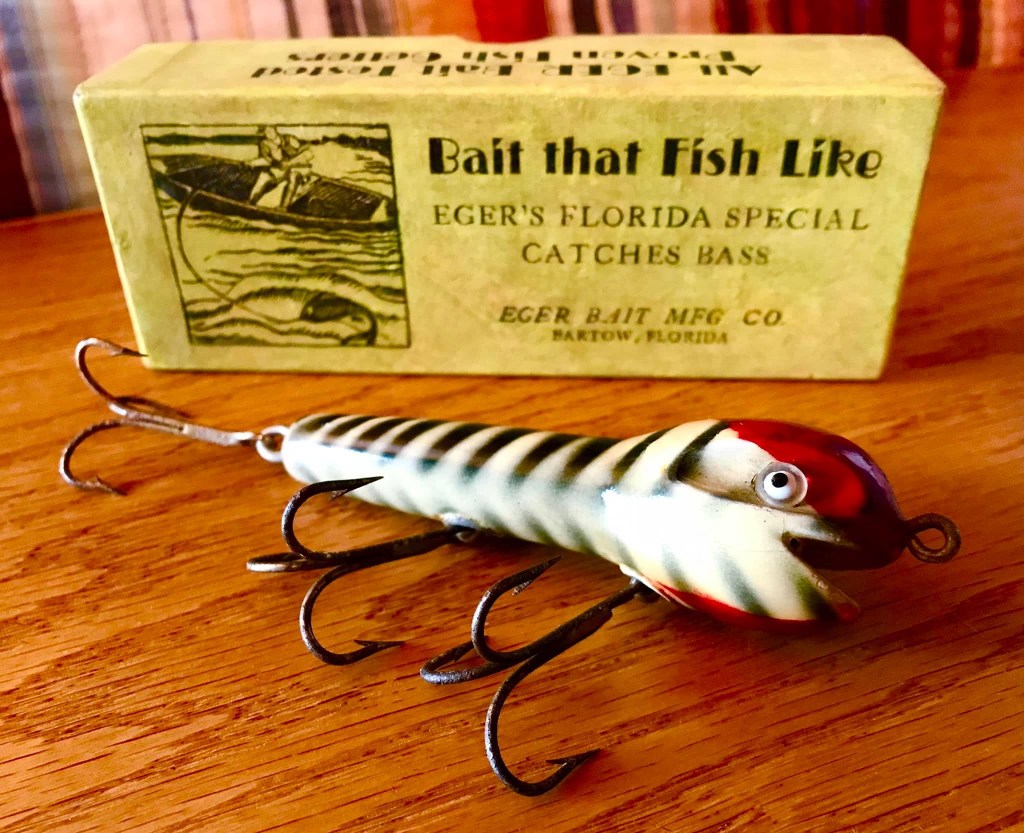
These unique wooden lures were introduced in the late 1920s by William Eger of Bartow, Fla. One of the Sunshine State’s most prolific lure manufacturers, Eger is credited with developing the process of wrapping real frog skin over a wooden lure body — a technique he patented and later licensed to other manufacturers, like Paw Paw and Shakespeare. Prior to that development, his frogs were airbrushed in brilliant colors — like this black-and-white striped pattern with red skullcap. Glass-eye Eger lures painted in any color are considered extremely rare, as are the company’s earliest boxes.
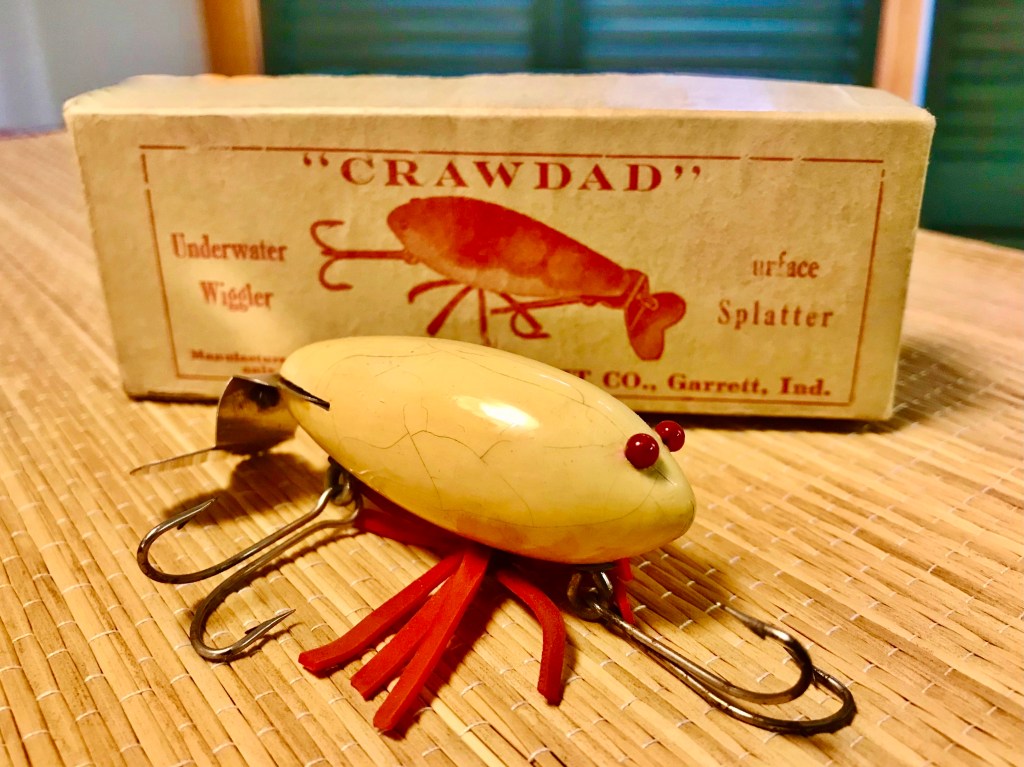
Introduced by Creek Chub Bait Company in 1918, the Crawdad was first named the “Creek Crab Wiggler.” But after a dispute with Heddon, they quickly changed it to “Creek Crab,” then again to “Crawdad.” The lure is made of wood and features a pair of tandem, removable hooks, glass bead eyes and rubber legs. It could be fished either as a diving plug or on the surface, depending on the orientation of its metal lip. This example’s creamy, white pattern was likely intended to represent the molting stage of a live crawdad.
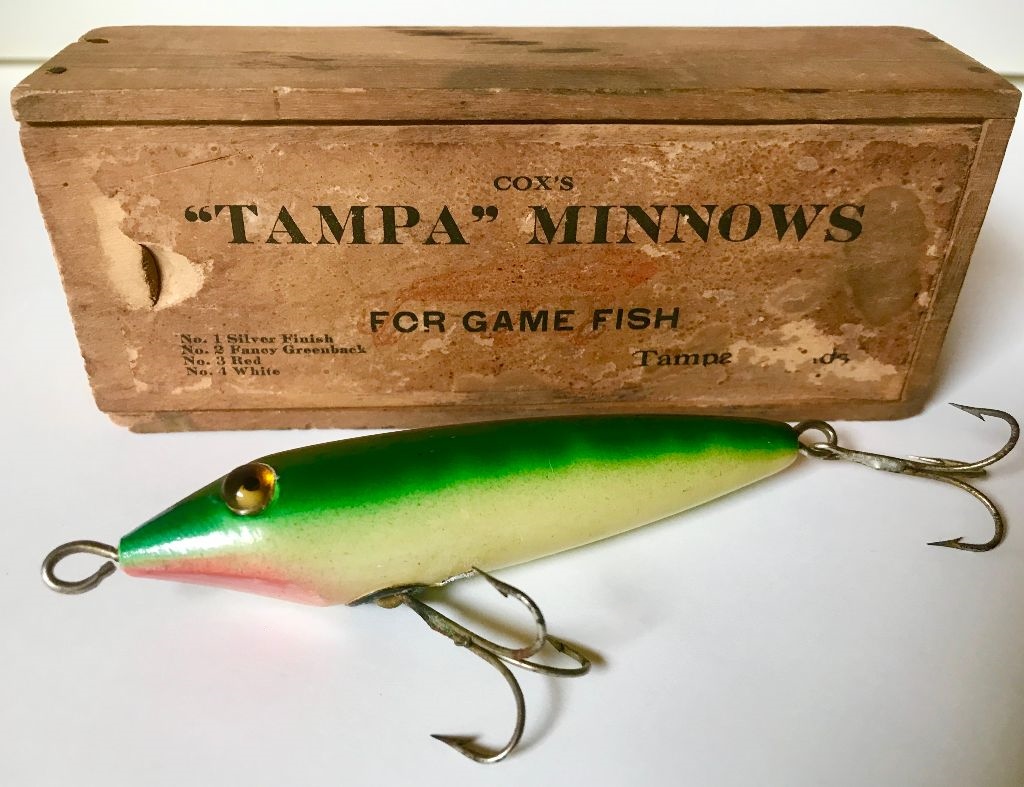
Many Florida collectors believe the first walking surface lure was introduced by Grover Cox of Tampa, Fla. Others believe it was James Heddon & Sons of Dowagiac, Mich. Interestingly, both the Tampa Minnow and earliest Heddon Zaragossas featured a “no-chin” body style, and they were available at about the same time. So which was first? To learn more, visit: The first walking surface lure.
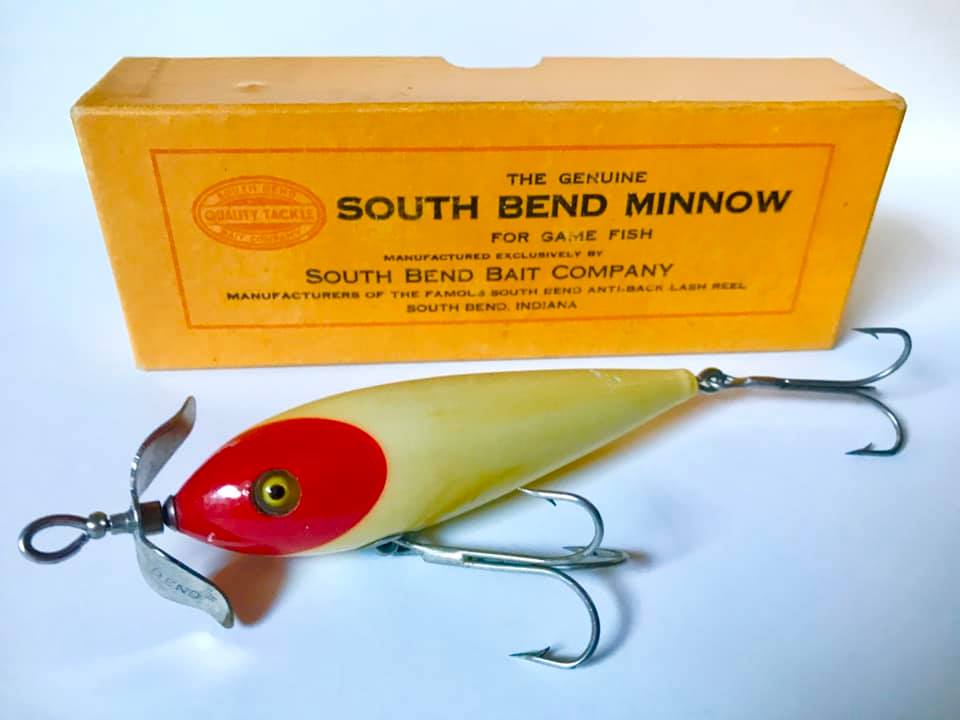
Available as early as 1910, these simple yet beautiful, full-bodied lures evolved to what became the Surf-Oreno — one of South Bend Bait Company’s all-time best sellers. This two-hook example features glass eyes, tandem props and an eye-catching red and white paint scheme. Add a matching, early yellow box and you have a very desirable combo.
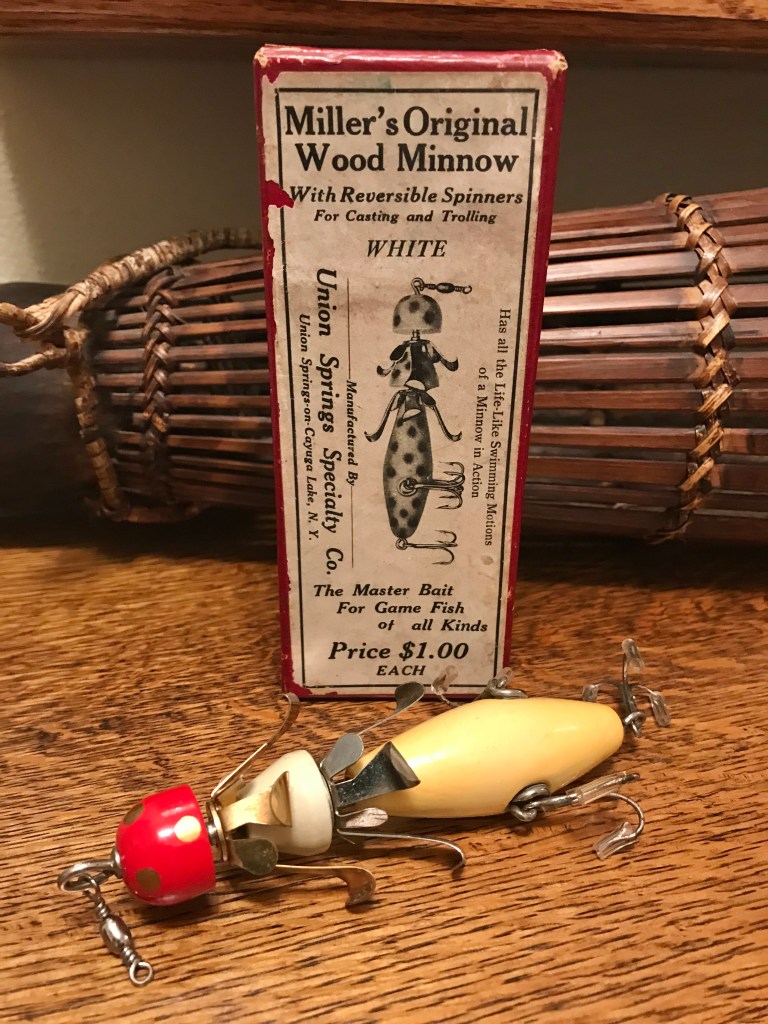
Offered in 1913 through Union Springs Specialty Company, these odd looking topwater lures feature unique counter-rotating props that could create quite a commotion. Available colors ranged from this red-and-white variation to yellow spotted and strawberry spotted. Some of you may recognize Union Springs as one of the past Bassmaster Elite Series tour stops in New York. Should you find one of these rare lures, consider yourself lucky … especially if it comes with its original box. They are quite valuable.





